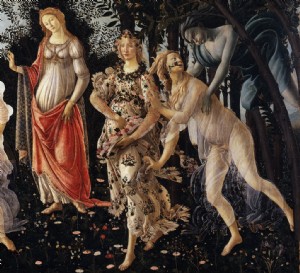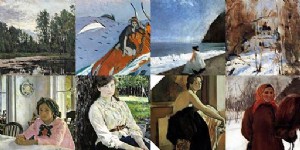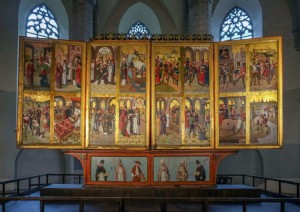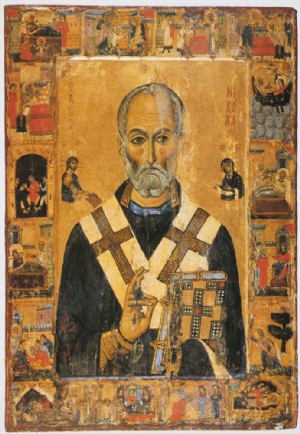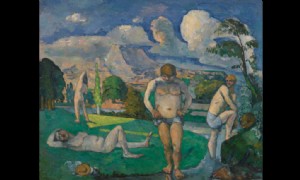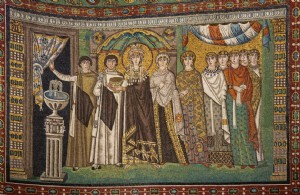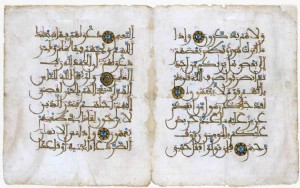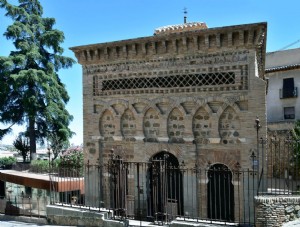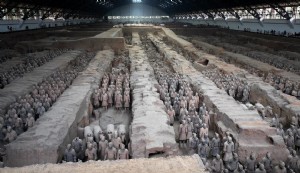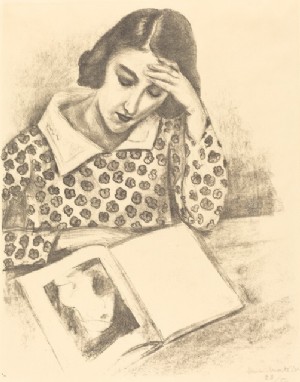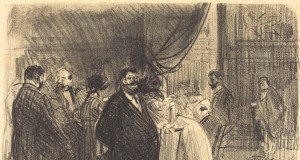그의 일생 동안, Ivan Nikolaevich Kramskoy는 예술의 얼굴에 생명을 불어넣고 능동적 지식을 위한 효과적인 도구가 되도록 노력했습니다. 뛰어난 예술가, 국립 회화 학교의 형성에 큰 역할을 한, 그 유명한 "14인의 폭동"을 이끌었고, Artel of Artists와 The Association of Wanderers의 수장에 섰고, 가장 혁명적인 것을 확증하는 데 변함없이 삶과 일이 기여한 사람들 중 한 명이었습니다. 그의 시대의 가장 진보된 아이디어.
이반 크람스코이의 사진
예리한 삶의 감각
Ivan Nikolaevich는 전기에서 다음과 같이 썼습니다. 5 월 27 일 (상급 예술 V.V.에 따라), Ostrogozhsk의 카운티 타운에서, 보로네시 지방., Novaya Sotna의 교외 정착지에서, 지역 속물주의에 배정된 부모로부터. 12 살, 나는 아버지를 잃었고, 아주 심한 남자, 내 기억에. 아버지는 도시 두마에서 복무했고, 내가 틀리지 않는다면, 기자로서(즉, 점원 - V. R.); 나의 할아버지, 이야기에 따르면 ... 또한 우크라이나에서 일종의 사무원이었습니다. 내 족보는 더 이상 올라가지 않습니다. "
그의 쇠퇴기에, 예술가는 아이러니하게도 "일종의"것이 자신에게서 나왔다고 지적했습니다. 그의 자서전에서, 약간의 씁쓸함이 느껴진다. 그러나 동시에 "하류 계급"에서 탈출하여 당대의 가장 저명한 인물과 동급이 된 사람의 정당한 자부심입니다. 화가는 평생 교육을 받기 위해 어떻게 노력했는지에 대해 썼습니다. 그러나 그는 Ostrogozh 지역 학교 만 마쳤습니다. 그는 그곳에서 "첫 번째 학생"이 되었지만. "... 나는 진정으로 교육받은 사람으로서 누군가를 그렇게 부러워한 적이 없었습니다. "라고 Kramskoy는 말합니다. 훈련 후에 그는 그의 아버지와 같은 도시 두마의 서기가 되었다고 언급했습니다.
청년은 일찍부터 예술에 관심을 갖게 되었고, 그러나 이것을 알아차리고 지지한 최초의 사람은 지역 아마추어 예술가이자 사진작가인 Mikhail Borisovich Tulinov였습니다. Kramskoy는 평생 감사했습니다. 한동안 그는 아이콘 페인팅을 공부했고, 그 다음에, 열여섯 살 때, 그는 "Kharkov 사진 작가와 함께 카운티 타운에서 탈출 할 수있는 기회를 가졌습니다." 미래의 예술가는 그와 함께 "3 년 동안 러시아의 큰 절반, 리터쳐와 수채화가로서. 가혹한 학교였습니다... ". 하지만 이 "가혹한 학교"는 Kramskoy에게 상당한 이익을 가져다 주었고, 그의 의지를 단련하고 끈질긴 성격을 형성했으며, 예술가가 되려는 그의 열망을 강화할 뿐입니다.
그의 일기장을 보면, 젊은 Ivan Kramskoy는 열정적인 청년이었습니다. 그러나 1857년에 자신이 원하는 것과 그것을 달성하는 방법을 아주 잘 알고 있는 사람이 이미 상트페테르부르크에 도착했습니다. 미래 화가의 독립적 인 길의 시작은 러시아 전체에 어려운 시간이 걸렸습니다. 크림 전쟁이 막 끝났고, 독재정권의 참혹한 군사적, 정치적 패배를 표시하고, 동시에 진보적인 인민과 광범한 인민대중의 대중의식을 일깨운다.
제국 아카데미의 모노리스
증오하는 농노의 폐지가 코앞에 다가왔습니다. 진보적인 러시아는 미래의 변화를 기대하며 살았을 뿐만 아니라, 그러나 모든 면에서 그들에게 기여했습니다. Herzen "Bell"의 알람이 강력하게 울렸고, 젊은 혁명가-raznochintsy, N. G. Chernyshevsky가 이끄는 인민해방을 위한 투쟁을 준비하였다. 그리고 실제 생활과는 거리가 먼, "높은"예술의 영역은 변화의 바람의 매력에 굴복했습니다.
농노가 사회의 모든 측면에서 발전하는 주요 브레이크였다면, 예술 분야에서 보수주의의 거점은 제국 예술 아카데미에 의해 18 세기 중반에 만들어졌습니다. 이미 수명을 다한 공식 교리와 미학적 원칙의 지휘자로서, 그녀는 "아름다운"영역이 실제 현실과 공통점을 가지도록 허용하지 않았습니다. 그러나 그녀의 학생들은 50년대 후반 ~ 60년대 초반, 삶이 예술에 대해 완전히 다른 요구를 한다는 것을 점점 더 확실히 느꼈습니다. N. G. Chernyshevsky의 "아름다움은 생명이다"라는 의미심장한 말은 모든 진보적인 러시아 지식인과 초기 러시아 민주주의 예술의 젊은 인물을 위한 프로그램 설정이 되었습니다. 그런 다음 그들은 예술 아카데미에 새로운 대중의 분위기를 가져왔습니다. 대학의 학생들과 긴밀한 관계를 구축하고, 의료 및 외과 아카데미, 소설 Chernyshevsky의 영웅 "나는 무엇을해야합니까?" 드미트리 로푸호프와 알렉산더 키르사노프, 둘 다 전형적인 raznochintsy, 동료 I. Kramsky가 공부했습니다.
상트페테르부르크 도착, Ivan Nikolaevich는 이미 뛰어난 리터쳐의 명성을 누렸고, 최고의 메트로폴리탄 사진가 I.F.의 스튜디오에서 그에게 문을 열었습니다. 알렉산드로프스키와 A.I. 데너. 그러나 성공적인 장인의 경력은 그를 만족시킬 수 없었습니다. Kramskoy는 예술 아카데미에 입학하는 것에 대해 점점 더 끈질기게 생각했습니다.
Kramskoi의 그림은 즉시 아카데미 평의회의 승인을 받았습니다. 그리고 1857년 가을에 그는 이미 A… T. Markov 교수의 학생이 되었습니다. 그렇게 그의 소중한 꿈은 이루어졌고, 그리고 나는 그가 Kramskoy를 매우 부지런히 연구했다고 말해야 만합니다. 열심히 그림을 그리고, 아카데미에서 문화가 매우 높았던 그는 역사적 및 신화적 주제에 대한 스케치 작업을 성공적으로 수행했으며, 모든 상을 받습니다.
그러나 젊은 화가는 진정한 만족을 느끼지 못했습니다. 사려깊은, 글을 잘 읽는 사람, 그는 점점 더 확실히 오래된 예술 교리와 실제 생활 사이의 근본적인 불일치를 느꼈습니다. Kramsky가 아카데미에 입학한 지 불과 몇 달 후, A. A. Ivanov의 "The Appearance of Christ to the People"은 상트 페테르부르크에서 이탈리아로 가져 왔습니다. 거의 30년 만에 러시아로 돌아온 작가, 이어진 갑작스러운 죽음, 동시대 사람들이 남긴 인상, 위대한 스승의 삶의 주역이 된 러시아 지식인의 초기 선진 부분의 의식을 형성하는 데 큰 역할을했습니다.
14명의 폭동
무엇보다도, 14명의 반란은 Ivan Kramskoy 자신이 오랜 친구 M. B. Tulinov에게 보낸 편지에서 이렇게 말했습니다. “사랑하는 Mikhail Borisovich! 주목! 11월 9일 아카데미에서 다음과 같은 상황이 벌어졌습니다. 그건, 지난 토요일:14명의 학생이 학급예술가 칭호에 대한 졸업장 발급 요청을 제출했습니다. 언뜻보기에는 놀라운 것이 없습니다.
사람들은 자유롭고, 자유학기제 학생, 할 수있다, 수업을 떠나고 싶을 때. 그런데 문제는 이 14명이 평범한 학생이 아니라는 사실, 하지만 첫 금메달을 위해 글을 써야 하는 사람들. 그것은 이랬다:지금으로부터 한 달 전, 우리는 플롯을 선택할 수 있는 권한 요청을 제출했고, 그러나 우리는 우리의 요청을 거부했습니다... 그리고 역사가들에게 이야기를 제공하고 원래 자신의 플롯을 선택한 장르 작가들에게 플롯을 제공하기로 결정했습니다. 대회 당일, 11월 9일, 우리는 사무실에 있고 함께 위원회에 가서 위원회가 결정한 것을 알아보기로 결정했습니다. 따라서, 조사관의 질문에:우리 중 누가 역사가이고 누가 장르 작가입니까? 우리, 모두가 함께 회의실에 들어갈 수 있도록 우리 모두가 역사가라고 대답했습니다. 마침내, 그들은 임무에 귀를 기울이기 위해 평의회를 방문합니다. 우리는 입력합니다. F.F. Lvov는 스칸디나비아 신화에서 "발할라의 향연"이라는 이야기를 읽어주었습니다. 영웅 기사들이 영원히 싸우는 곳, 신 오딘이 다스리는 곳, 그의 어깨에는 두 마리의 까마귀가 있고, 그의 발에는 두 마리의 늑대, 그리고 마지막으로, 하늘 어딘가, 열 사이, 늑대의 모습을 한 괴물이 몰고 다니는 달, 그리고 다른 많은 넌센스. 이후, 브루니가 일어났다. 줄거리를 설명하기 위해 우리에게 와서 항상 그렇듯이. 그러나 우리 중 한 사람은 즉 크람스코이, 스스로를 분리하고 다음과 같이 말합니다. 그리고 모든 눈이 화자를 노려보았다.) “우리는 두 번이나 요청을 했고, 그러나 위원회는 우리의 요청을 이행하는 것이 가능하다는 것을 찾지 못했습니다. "우리, 더 이상 주장할 권리가 있다고 생각하지 않고, 학문적 결정을 바꾸는 것에 대해 감히 생각하지 않으며, 겸손하게 대회 참가를 면제해 주시고, 아티스트 칭호를 위한 졸업장을 달라고 부탁드린다"고 말했다.
잠시 - 침묵. 마침내, Gagarin과 Tone은 "그게 다야?"라고 소리를 냅니다. 우리는 "모든 것"이라고 대답합니다. 그리고 우리는 떠난다. 그리고 다음 방에서 우리는 사건 관리자에게 탄원서를 제출합니다 ... 그리고 같은 날 Gagarin은 Dolgorukov에게 편지를 보내 그를 미리보기하지 않고는 문학에 아무것도 나타나지 않도록 요청했습니다 (Gagarin). 한마디로, 우리는 그것을 곤경에 빠뜨렸습니다. 그래서, 우리는 우리 자신의 후퇴를 차단하고 돌아오고 싶지 않습니다. 아카데미가 100주년을 맞이하여 건강하기를. 우리의 행동에 대한 동정심을 어디에서나 찾을 수 있습니다. 그래서 하나, 작가님들이 보내주신 출판 위원회에서 내가 한 말을 그에게 말하라고 했습니다. 그러나 우리는 지금 침묵하고 있습니다. 그리고 우리는 여전히 손을 꼭 잡고 있었기 때문에 우리가 길을 잃지 않도록, 우리는 예술 협회를 결성하기로 결정했고, 그건, 함께 일하고 함께 살기 위해. 우리 사회에 적합한 실천적 구조와 일반규범에 대한 조언과 생각을 말씀해 주시기를 부탁드립니다… 우리의 행동 범위에는 포용이 있습니다. 초상화, 아이콘, 사본, 원본 그림, 출판물 및 석판화용 도면, 나무 그림, 한마디로, 우리 전문과 관련된 모든 것이… 여기 프로그램이 보기와 같이 명확하지 않습니다… ".
이 편지에서, 작가는 젊은 작가들과 아카데미 간의 대립의 기복을 드러낼 뿐만 아니라, 미래에 대한 전망도 보고 아직 완전히 명확하지 않은, 그러나 매우 대담하고 자신의 생존이라는 이기적인 목표에 국한되지 않습니다. 이 사건 이후, Kramskoi와 그의 동료들에 대한 비밀 경찰 감시가 이루어졌습니다. 몇 년 동안 지속되었습니다. 다음은 "폭동"에 참여한 14명의 이름입니다. 화가 I. Kramskoy, A. 모로조프, F. 주라블레프, M. 페스코프, B. 베니그, P. 자볼로츠키, N. 슈스토프, A. 리토프첸코, N. 드미트리예프, A. 코르주킨, 그리고리예프, N. 페트로프, K. Lemoh와 조각가 V. Kreitan.
그들 모두는 워크샵을 긴급하게 해제하라는 명령을 받았고, 그러나 청년, 생계를 유지하지 못한 채, 여전히 큰 승리를 거두었다. 그 당시에는 그 의미를 거의 이해할 수 없었습니다. 이것은 러시아 민주주의 사실주의 예술의 첫 번째 정복이었습니다. 곧, 크람스코이, 마음이 맞는 사람들과 함께, 최초의 독립 "예술 협회"인 Artels of Artists의 창설 - 그의 아이디어의 실질적인 구현을 시작했습니다.
크람스코이 아이즈 레핀
아카데미에서 퇴학당한 후, Kramskoy는 Society for Encouragement of Arts, "우크라이나에서 상트페테르부르크에 막 도착한 재능있는 청년"이 있는 학생들 중, Kramskoy 자신이 한때 예술 아카데미 - Ilya Repin에 들어가기를 꿈꿨던 것처럼.
Ilya Efimovich 자신은 Kramskoy와의 첫 만남을 다음과 같이 설명합니다. 오후 열두시. 수업에 활기가 넘치고, 크람스코이는 거기에 없습니다. 우리는 Milon Krotonsky의 머리에서 그림을 그립니다. 교실은 시끄럽습니다. 갑자기 완전한 침묵이 흘렀습니다. 그리고 나는 검은색 프록 코트를 입은 마른 남자를 보았습니다. 단단한 걸음으로 교실에 들어선다. 다른 사람인 줄 알았어요. 크람스코이를 다르게 상상했어요. 아름다운 창백한 옆모습 대신 이 사람은 가느다란 건방진 얼굴과 어깨까지 오는 밤색 곱슬 머리 대신 검은 매끄러운 머리카락을 가지고 있었고, 학생과 교사 만이 그런 초라한 것을 가지고 있습니다. 유동적인 수염. - 누구세요? 나는 친구에게 속삭입니다. - 크람스코이! 몰라? 그는 궁금해한다. 그래서 그는 여기 있습니다! .. 이제 그는 나를 보았습니다. 눈치 챈 것 같습니다. 어떤 눈! 숨 지마, 비록 그것들이 작고 침몰한 궤도에 깊숙이 앉아 있지만; 회색, 글로우… 정말 진지한 얼굴입니다! 목소리는 유쾌하지만, 진실 된, 감정으로 말한다… 그러나 그들은 또한 그것을 듣습니다! 그들은 심지어 그들의 일을 포기했고, 그들은 입을 벌리고 서 있습니다. 모든 단어를 기억하려고 하는 것이 분명합니다. "
레핀, 많은 러시아 예술가들처럼 (Kramskoy 자신은 훌륭하게 썼습니다. 페로프처럼), Repin은 재능있는 작가로 밝혀졌습니다. 그의 에세이 "Ivan Nikolaevich Kramskoy (In Memory of the Teacher)"에서, 타고난 충동성으로 그는 매우 활기찬, 표현적인 문학적 초상화. “Repin의 페이지에서 Kramskoy의 페이지는 모두 움직이고 있습니다. 투쟁에서, 그것은 판옵티콘의 얼어붙은 밀랍 인형이 아니라, 그것은 바로 에피소드가 풍부한 매혹적인 이야기의 영웅입니다. K. Chukovsky는 나중에 썼습니다.
Repin은 자화상과 거의 모든 세부 사항이 일치하는 이미지를 만들었습니다. 1867년 Kramsky에 의해 작성되었으며 비정상적으로 객관적인 특징이 특징입니다. 사진 속에, 주인공의 얼굴, 엄격한, 회색 눈동자의 날카로운 시선. 정신, 할 것이다, 구속 - 이것은 예술가의 주요 성격 특성이며, 캔버스에서 명확하게 볼 수 있습니다. 그림이나 포즈를 취하지 않아도 자랑스러운 자부심이 드러난다. 화가의 외양에서는 모든 것이 단순하고 자연스럽고 내면에서는 조화롭게 자신의 방식대로입니다. 초상화의 색상은 거의 단색에 가깝고, 붓놀림은 역동적이고, 우리 앞에는 최초의 St. Petersburg Artel of Artists의 인정된 수장이 있습니다.
아르텔의 창조
집 번호 2/10의 정면에서, 상트페테르부르크의 Mayorov Avenue와 Admiralteysky Prospekt 모퉁이에 서서, "이 집에서, 1866년부터 1870년까지, 주요 러시아 예술가 Ivan Kramskoy는 살면서 일했습니다. 그가 조직한 Artel, 60년대를 대표하는 리얼리즘 작가들을 모아 여기에 위치했습니다. "하지만 실제로는 Artel of Artists는 수도의 중심에 즉시 방을 구하지 않았고, 궁전 광장에서 멀지 않습니다.
모든 것이 훨씬 더 겸손하게 시작되었습니다. Artel의 조직을 기억하며, Kramskoy는 죽기 전에 Stasov에게 다음과 같이 썼습니다. 14명 모두가 의자 2개와 다리가 3개인 탁자 하나를 가지고 있었기 때문입니다. 적어도 무언가를 가진 사람들은 즉시 사라졌습니다. " "많은 고민 끝에 " Repin은 다음과 같이 썼습니다. "그들은 정리가 필요하다는 결론에 도달했습니다. 정부의 허가를 받아, Artel of Artists - 일종의 예술 회사, 거리에서 주문을 받는 작업장 및 사무실, 서명과 승인된 헌장과 함께. 그들은 Vasilievsky Island의 17번째 라인에 있는 큰 아파트를 임대하고 (대부분) 그곳에서 함께 살기 위해 이사했습니다. 그리고 그들은 즉시 생명을 얻었습니다. 기운내. 일반적인 큰 밝은 방, 모두를 위한 편안한 객실, 자신의 가정, Kramskoy의 아내가 지휘한 이 모든 것이 그들을 격려했습니다. 삶이 더 재미있어졌고, 그리고 몇 가지 명령이 나타났습니다. 사회는 권력이다. " 그래서 Kramskoy가 조직한 최초의 예술가 협회가 있었습니다. 그것은 많은 재능있는 예술가들이 생존 할 수있게했을뿐만 아니라 그러나 성공을 이루기 위해서는 인정과 재정적 독립, 어느, 결국, 조직의 완전한 붕괴를 초래했습니다.
개인 생활과 심리학에 대한 관심
Ivan Nikolaevich는 항상 자신이 선택한 사람이 충실한 여자 친구가 될 것이라고 확신했습니다. 예술가의 삶의 모든 고난을 그와 함께 나눌 것입니다. 소피아 니콜라예브나, 그의 아내가 된 사람, 개인적인 행복에 대한 꿈을 완전히 실현했습니다. 작가가 아내에게 보낸 편지 중 하나에서, 우리는 다음과 같이 읽습니다. 그러나 당신 자신이 진정한 장인이 된 것처럼…”. Kramskoy는 Sofia Nikolaevna의 초상화를 반복적으로 그렸습니다. 그리고 그녀를 예술가의 "뮤즈"라고 부르기에는 너무 과감하지만, 그녀는 의심할 여지 없이 그에게 이상적인 여성이었다. 이것에 대한 가장 좋은 확인은 60년대의 초상화로 만든 그녀의 이미지입니다. 모든 그림의 공통점은 무결성, 히로인의 독립심과 긍지, 그들이 그녀에게서 "새로운 여성"을 볼 수 있도록 하고, 동시에 진정한 여성성을 잃지 않은 사람, 시와 부드러움.
이러한 특성은 특히 그녀의 그래픽 초상화에서 두드러집니다. Tretyakov 갤러리(1860년대)에 속해 있습니다. 어린, 강인한 성격을 지닌 매력적이고 부드러운 여성, 정력적인 머리 회전과 엄격한 말을 들은 것처럼, 그러나 열린 모습.
그림 "읽기. S. N. Kramskoy의 초상화", 1863년에 그린 19세기 초반의 서정적인 여성 초상화를 떠올리게 합니다. 그림의 색상은 밝은 녹색 음영의 조합을 기반으로 하며, 라일락 및 기타 섬세한 색상. 캔버스에서 큰 역할은 풍경과 소수에 의해 수행되며, 초상화의 여주인공의 명백한 매력을 전달하는 데 도움이 되는 엄선된 액세서리. Kramskys의 젊은 부부는 1865년에 그들의 상호 친구 "장인" N. A. Koshelev에 의해 붙잡혔습니다. "아내와 함께한 크람스코이" 그림에서 서정적인 스케치를 볼 수 있습니다. 소피아 니콜라예브나는 피아노를 연주하고, Ivan Nikolaevich는 그녀의 음악 반주에 대해 생각에 빠졌습니다.
60년대에는 Kramskoy는 그의 친구들의 많은 그래픽 초상화를 만들었습니다:N. A. Koshelev, 배우자 Dmitriev-Orenburg, M.B. 툴리노프, I. I. Shishkin, 점점 더 그들의 심리학을 강화합니다. 진실, 급속도로 발전하는 사진, 그것은 보일 것입니다, 예술적 그래픽과 값비싼 초상화를 대체하기 시작했습니다. 카메라는 그가 포즈를 취하는 모습을 정확하게 포착할 수 있을 뿐만 아니라, 또한 의상의 필요한 세부 사항을 유리하게 강조하고, 풍부한 분위기, 보석류, 등등 하지만, 시간이 보여주듯이, 그는 한 가지를 할 수 없었습니다. 사람의 내면을 들여다보십시오. 그에게 특정 사회적 및 심리적 평가를 제공하십시오. 이것은 예술가가 만든 초상화에서만 달성할 수 있었습니다.
이것이 바로 심리적 초상화의 개선이었습니다. N.N을 포함하여 게, V.G. 페로프와 I.N. 크람스코이. 러시아 사실주의 초상화의 강력한 상승은 방랑자 시대의 시작과 아르텔 시대의 끝과 맞물려, 시간이 지나면서 본래의 의미를 잃어버린 것입니다.
방랑자의 파트너십
TPHV를 만드는 훌륭한 아이디어, 러시아 예술의 삶에서 큰 역할을 한 저명한 모스크바와 상트 페테르부르크 예술가 그룹에 속했으며, 그리고 유명한 장르 작가 G. G. Myasoedov가 이니셔티브의 직접적인 개시자였습니다. 그는 Artel에게 편지를 썼습니다. 개별 회원들의 지원으로 그곳에서 만나며, 주로 - I.N. 크람스코이.
토가에서는 1870년, 러시아 민주주의 예술을 국가 후견인으로부터 해방시킬 수 있는 조직이 만들어졌습니다. 모든 회원의 개인적 물질적 이익을 원칙으로 하는 협회를 중심으로 선도적인 예술가들을 규합합니다. 파트너십의 주요 목표는 예술의 발전이었습니다. 순회 전시의 실천은 예술가와 폭넓은 관객 사이에 직접적인 소통의 가능성을 열어주었고, 우리 시대의 가장 시급한 문제를 제기하면서.
수십 년에 걸쳐, 오후. 그의 컬렉션에서 Wanderers의 최고의 작품을 많이 얻었습니다. 트레차코프. 11월 28일(12월 12일, 새로운 스타일에 따라), 1871년, 파트너십의 첫 번째 전시회는 상트페테르부르크에서 열렸습니다. 그것은 Kramsky에게 있었다는 점에 유의해야합니다. 매우 확고한 원칙과 신념을 가진 사람, 설립된 여행 예술 전시회의 파트너십은 곧 전시 조직의 업무를 능가하고 고급 러시아 예술의 진정한 학교가 되어야 했습니다.
이반 니콜라예비치 자신, 파트너십을 조직하고 그의 창의적인 삶을 인도하며, 그에게서 자신의 예술적 높이에 도달할 수 있는 "번식지"를 찾았습니다. 방랑자 협회의 전성기는 Kramskoy 작업의 전성기와 일치했습니다. 그리고 화가로서, 그리고 비평가-홍보가로서, 그는 예술의 운명과 높은 사회적 사명에 대한 자신의 생각을 표현한 매우 진지한 여러 기사의 저자입니다.
다양한 사람들에게 보내는 수많은 편지에서, 과거의 위대한 거장들과 현대 러시아 및 유럽 예술가들에 대한 Kramskoy의 많은 흥미로운 논평을 읽을 수 있습니다. 작가의 비판적 추리에서 가장 눈에 띄는 순간은 자신의 내면에서 벌어지는 그 거대하고 끊임없는 내면의 작업을 어떻게 표현해야 하는지 남에게 가르치기 위해 글을 많이 썼다는 점이다.
크람스코이, 그의 미학적 관점에서, 위대한 민주주의자 V.G.의 가르침을 일관되게 지지했습니다. 벨린스키와 N.G. 체르니셰프스키. 그가 썼다, 삶 그 자체만이 예술 창작의 기초가 될 수 있다는 믿음:“예술이 입법자가 되는 것은 나쁘다!.. 인민의 진지한 이익은 항상 덜 중요한 것보다 앞서야 한다.”
Kramskoy는 “예술은 국가적일 수 없다. 어디에도 없었고 다른 예술은 없었습니다. 그리고 소위 보편적인 인간 예술이 존재한다면, 그것은 인류의 보편적 발전 앞에 섰던 민족이 표출한 것이기 때문이다. 그리고 머나먼 미래에 러시아가 민족들 사이에서 그러한 위치를 차지할 운명이라면, 그런 다음 러시아 예술, 국가적이며, 보편화될 것입니다. "
그리스도의 이미지
프랑스 인상파 미술의 전성기에는 레핀, 파리에 있었고 그들의 작품을 존경했던 사람, "우리"라고 썼습니다. 즉, 러시아인, "완전히 다른 사람들, 게다가, 개발(artistic. - VR)에서 우리는 초기 단계에 있습니다." 러시아 예술가들은 마침내 "빛으로 나아가야 한다. 색상에, " Repin은 다음과 같이 말합니다. "... 우리의 임무는 콘텐츠입니다. 얼굴, 사람의 영혼, 인생 드라마, 자연의 인상, 그 삶과 의미, 역사의 정신 - 이것이 우리의 주제입니다. 우리의 색은 도구입니다. 그들은 우리의 생각을 표현해야 하며, 우리의 색깔은 우아한 반점이 아닙니다, 사진의 분위기를 표현해야 하고, 그녀의 영혼, 그는 전체 청중을 포지셔닝하고 포착해야 합니다. 음악의 코드처럼. "
유사한 아이디어가 F.M.의 많은 러시아 문화 인물에 의해 표현되었다는 점에 유의해야합니다. 도스토예프스키에서 MP로 무소르그스키. 그들은 I.N.의 작품에 직접 구현되었습니다. 크람스코이.
작가의 작업에서 가장 중요한 작업은 방랑자 협회(1872)의 두 번째 전시회에서 선보인 "사막의 그리스도"(1872) 그림, 오래 전에 생겨난 아이디어. 작가는 그녀가 그를 위해 가장 중요한 아이디어의 보고가 되었다고 말했습니다. 삶에 대한 매우 무거운 감각이 내 안에 자리 잡았습니다. 나는 모든 사람의 삶에 한 순간이 있음을 분명히 봅니다. 조금이라도 하나님의 형상과 모양대로 지음 받은 그가 그것에 대해 반성할 때 - 오른쪽으로 갈지 왼쪽으로 갈지.. 우리 모두는 그러한 진동이 보통 어떻게 끝나는지 압니다. 생각을 더 확장하고, 일반적으로 인류를 포용하고, NS, 내 자신의 경험에서, 내 작은 원본에서, 그리고 그것만으로도, 역사적 위기 동안 일어났던 끔찍한 드라마를 짐작할 수 있습니다. 그리고 이제 저는 제 생각을 다른 사람들에게 말할 필요가 있습니다. 그러나 어떻게 말할 것인가? 어떻게, 어떤 식으로 이해할 수 있습니까? 자연의 성질상, 상형 문자의 언어는 나에게 가장 접근하기 쉽습니다. 그러다가 한 번… 나는 한 사람이 깊이 생각에 잠긴 모습을 보았고… 그의 생각이 너무 진지하고 깊어서 나는 그를 끊임없이 한 자리에 앉혔습니다… 그가 그에게 중요한 문제로 바쁘다는 것이 분명해졌습니다. 너무 중요해서 그는 끔찍한 육체적 피로에 둔감해... 누구였지?그는 끔찍한 육체적 피로에 둔감해... 누구였지?그는 끔찍한 육체적 피로에 둔감해... 누구였지? 잘 모르겠습니다.아마도, 그것은 환각이었다. 나는 정말로 그를 보지 못했을 것입니다. 제가 하고 싶은 말과 가장 잘 맞는 것 같았습니다. 그럼 발명할 필요도 없었고, 그냥 복사해 보았습니다. 그리고 그가 끝났을 때, 그는 그에게 대담한 이름을 지어주었다. 하지만 내가 할 수 있다면, 내가 그를 지켜보던 당시, 그것을 쓰다, 그리스도입니까? 모르겠어요…".
우리는 본 작업을 준비하기 위해 만들어진 수많은 드로잉과 스케치에 의해 작가가 바로 그 "올바른" 이미지를 만들기 위해 얼마나 오랜 시간과 노력을 기울였는지 알 수 있습니다. Kramskoy에게 이 그림의 중요성은 Tretyakov Gallery에 게시된 후에도 작업을 계속했다는 사실로 판단할 수 있습니다.
화가는 회색 위에 앉아 있는 그리스도를 묘사했고, 차가운 돌, 사막의 흙은 죽었다. 예수님은 아직 사람의 발이 밟지 않은 곳으로 방황하신 것 같습니다. 작업 공간을 반으로 나누는 수평선의 섬세한 균형, 그의 모습은 캔버스의 공간을 동시에 지배하며, 하늘을 배경으로 선명한 실루엣을 그리며 캔버스에 묘사된 지상 세계와 조화를 이룹니다. 그것은 예술가가 영웅의 내면의 드라마를 심화시키는 데 도움이 될 뿐입니다. 사진에는 액션이 없지만, 그러나 보는 사람은 영혼의 생명을 느끼는 것 같으며, 하나님의 아들의 생각의 역사, 자신을 위해 몇 가지 중요한 문제를 해결합니다.
그의 다리는 날카로운 돌에 상처를 입고, 그림이 구부러지고, 그의 손은 고통스럽게 움켜쥡니다. 그 동안에, 예수의 쇠약해진 얼굴은 그의 고통을 전달할 뿐만 아니라, 그러나 모든 것에도 불구하고, 엄청난 의지를 표현하고, 그가 평생을 바친 생각에 대한 무한한 충실함.
“그는 해가 아직 그의 앞에 있을 때 그렇게 앉았다. 피곤 앉아, 탈진 한, 처음에 그는 태양을 바라보았고, 그런 다음 밤을 눈치 채지 못했습니다. 그리고 새벽에, 태양이 그의 뒤로 떠오를 때, 그는 계속 움직이지 않고 앉아 있었다. 그리고 그가 감각에 완전히 둔감했다고 말할 수는 없습니다. 그, 아침 감기 발병의 영향으로, 본능적으로 팔꿈치를 몸에 밀착시켰다. 그리고 만, 하지만, 입술이 바짝바짝 마른 것 같았고, 긴 침묵에서 함께 붙어, 그의 눈만이 내면의 일을 배반했고, 비록 그들은 아무것도 보지 못했지만… ".
저자는 동시대인들에게 다음과 같이 말한다. 이 작품에서 크고 영원한 보편적인 인간 문제를 제기하고, 삶의 길을 선택하는 어려운 질문을 그들 앞에 던졌습니다. 그 당시 러시아에는 진리를 위해 자신을 희생할 준비가 된 사람들이 많이 있었는데, 선과 정의. 젊은 혁명가들, 그는 곧 많은 민주적 문학과 회화 작품의 영웅이 되었고, 사람들에게 가는 길'을 준비하고 있었습니다. Kramskoy의 그림과 삶 사이의 밀접한 관계는 분명했습니다. 그러나 예술가는 작업 프로그램을 만들고 싶어했습니다. 이것은 그리스도가 아니다. 그건, 나는 그것이 누구인지 모른다. 제 개인적인 생각의 표현입니다. 어느 순간? 이행. 다음은 무엇입니까? 다음 책에서 계속됩니다. " 바로 "다음 책"은 캔버스 "웃음"("기쁨, 유대인의 왕이여!”, 1877-1882).
1872년, Kramskoy는 F. A. Vasiliev에게 다음과 같이 썼습니다. 우리는 확실히 해야 합니다, 그건, 실제로는 그가 아니라, 허다한 웃음을 짓는 저 군중, 그들의 거대한 동물 폐의 모든 힘과 함께 ... 이 웃음은 지금 몇 년 동안 괴롭혀 왔습니다. 어렵다고 힘든게 아니라, 그러나 그들이 웃는 것은 어렵다. "군중 앞에서 그리스도, 조롱, 침을 뱉다, 그러나 "그는 조각상처럼 침착하다. 캔버스처럼 창백하다." "선에 대해 진지하게 이야기하지는 않지만, 정직, 우리는 모두 조화롭게, 삶에서 기독교 사상을 진지하게 구현하려고 노력하고, 웃음이 어떻게 피어오르는지 보십시오. 이 웃음은 어디에서나 나를 괴롭힌다. 어디를 가든, 내가 그를 듣는 모든 곳에서. "
예술가에게 “진지하게 기독교 사상을 추구한다”는 것은 공식적인 정교회의 교리를 긍정한다는 의미가 전혀 아니었다. 그것은 진정한 도덕을 옹호하려는 열망이었고, 인류. "웃음"의 주인공은 Kramskoy 자신의 아이디어뿐만 아니라, 당시 정직하게 생각했던 많은 대표자들의 생각을 요약해 놓았고, WHO, 무례함과의 직접적인 만남, 모든 것을 파괴하는 냉소주의, 탐욕, 추상적 선이 실제 악을 이길 수 없다는 것을 분명히 보여주었습니다.
가사
Kramskoy의 삶에서, 그의 삶의 한가운데, 이바노프가 여행의 마지막에 겪었던 것과 관련된 어떤 드라마가 있었습니다. 작가는 자신에게 닥친 창조적 실패("웃음" 작업은 결코 완성되지 않았다)가 그가 선택한 이데올로기적 입장이 전체적으로 잘못된 결과라고 생각하기 시작했다. 이러한 의심은 러시아 지식인을 대표하는 많은 사람들의 특징적인 유토피아적 극대주의에 의해 생성되었습니다. 아티스트는 어려운 작업을 성공적으로 해결했으며, 그가 그리스도에 관한 일의 순환의 모양으로 그것을 시도 헛되이, 70-80년대 그의 장엄한 초상화에서, 그의 대형 갤러리에 고급 러시아 작가의 이미지를 구현하고, 과학자, 예술가와 무대 인물은 도덕적으로 외모가 높은 인물입니다.
같은 70년대, Kramskoy는 이전에 그에게 독특하지 않은 여러 서정적 인 작품을 씁니다. 그 생생한 예는 그림 "고택 조사"(1873)입니다. 버려지고 무너지는 "고귀한 둥지"에 대해 알려줍니다. 주인이 돌아온 곳, 여러 해의 부재 후. "늙은 순종 신사, 학사, " 마침내 "오랜만에 그의 가족 재산에 와서 아주 오랜 시간 동안 폐허가 된 부동산을 발견했습니다. 천장이 한 곳에서 무너지고, 거미줄과 곰팡이가 있는 곳마다 벽에는 수많은 조상들의 초상화가 걸려 있습니다. 두 명의 여성 성격이 그를 그의 팔 아래로 이끕니다... 그 뒤에 - 구매자 - 뚱뚱한 상인... ".
우리는 버려진 가족 재산의 방을 따라 천천히 움직이는 노인을 봅니다. 그래서 그는 거실로 들어갔다. 시시때때로 어두워지는 그의 조상들의 초상화를 매달아 놓고, 회색 화포 덮개에 있는 앤티크 가구를 보았다, 이 오래된 집의 공기조차도 연기가 자욱한 먼지 톤으로 칠해진 것 같습니다. 여기서 시간이 멈췄다. 창문에서 들어오는 소심한 빛은 이 과거의 안개를 걷어낼 수 없습니다.
N.A.가 Tretyakov Gallery의 가장 오래된 직원 중 한 명인 Mudrogel의 편지에서 언급했듯이, "그림에서"일 가능성이 높습니다. 오래된 집 검사 "Kramskoy는 자신을 묘사했습니다." 동시대의 증거는 의심할 여지 없이 흥미롭다. 하지만, 이것이 사실이라 할지라도, 작가는 이 슬픈 서정적 상황만을 시도한 것이 아니다. Kramskoy는 그의 이미지에 투자하여 광범위한 시적이고 깊은 사회적 의미를 창출했습니다.
아시다시피, 그림은 미완성으로 남아 있었다. 아마도 크람스코이, 활성으로, 활동적인, 순전히 "공적인"사람, 단순히 자신을 쉬게 두지 않고, 리리컬 채널에 들어가서 자신의 약점을 극복하고, 완전히 다른 사회적 의미를 지닌 작품을 작업하기 위해 더 중요, 그의 의견은, 1870년대 러시아의 어려운 사회 예술적 상황에서. "본질적으로, 나는 초상화를 사랑한 적이 없다. 그리고 내가 그것을 참을 수 있다면, 인간의 외모를 사랑하고 사랑했기 때문에… 부득이하게 초상화가가 되었고, "라고 Ivan Nikolaevich는 썼습니다. 분명한데, 하지만, 단지 "필요성"만으로는 그를 뛰어난 초상화 대가로 만들 수 없었습니다.
톨스토이의 초상
증명할 필요가 있으며, Chernyshevsky의 아이디어에 따르면, "인간은 세상에서 가장 아름다운 미인이다. 우리의 감각에 접근할 수 있는, "는 Kramskoy에서 "인간의 생리학"에 대한 예리한 관심을 불러 일으켰습니다. 인간의 영혼을 반영하고자 하는 작가의 관심 덕분에, 이 시대에 주인이 만든 초상화는 1860년대와 80년대 러시아 미술에 귀중한 공헌을 했습니다.
"지금 가지고 있는 초상화, " 즉. Repin은 1881년에 그에게 편지를 썼습니다. "친애하는 민족의 얼굴을 대표하고, 최고의 아들들, 그들의 사심 없는 활동에 긍정적인 이익을 가져다준 사람들, 조국의 이익과 번영을 위해 who believed in its better future and fighting for this idea… ”Ivan Nikolaevich Kramskoy became one of the founders of the gallery of portraits, thanks to which we can now see the faces of people who played a huge role in the history and art of Russia. Among the first of them was Leo Tolstoy, whose first portraits were painted by Kramskoy.
To get a portrait of the great Russian writer in the collection was Tretyakov’s cherished dream, but so far no one has managed to persuade Lev Nikolaevich to pose. 반면에, there was Kramskoy, who tried to persuade the collector to help the young talented artist F.A. Vasiliev, who was dying in the Crimea from consumption. 결과적으로, in 1873 Kramskoy, in order to pay Tretyakov’s debt for Vasiliev, persuaded Tolstoy to pose for him for two portraits:one was intended for a collector, the second for the writer’s house in Yasnaya Polyana.
Ivan Nikolaevich worked on both canvases in parallel, while trying to avoid absolute identity. 결과적으로, the writer’s family chose a portrait with a more intimate interpretation of Lev Nikolaevich, in which he is immersed in himself. Tretyakov got a portrait in which the writer, 그대로, addresses the viewer. So the artist managed to simultaneously create two fundamentally different artistic images.
Both portraits have a number of common features. 첫째, a neutral background, due to which the location of the figure in space ceases to play any role. 둘째, the hands of the model are written out only in general terms. 셋째, the artist deliberately avoided expressive picturesqueness in color. Such restraint of the plastic decision made it possible to transfer all attention to the face of the forty-five-year-old Tolstoy - open, 단순한, framed by a broad beard and a manly cut hair.
The main thing in the created portraits is the eyes of the writer, expressing the intense work of the thoughts of an intelligent and educated person. From the picture of Kramskoy, Tolstoy looks at us “adamantly and sternly, even coldly… not allowing himself to forget at least for a moment about his task of observation and analysis. He becomes a scientist, and his subject is the human soul, ”the prominent Soviet art critic D.V. Sarabyanov described his impression. It was the comprehension of Tolstoy’s powerful intellect that became the main goal and, 물론이야, represented the main difficulty that the artist encountered in this work.
Portraits of the great
Kramskoy painted many portraits commissioned by Tretyakov, paying tribute to this outstanding person. So in 1871, the artist writes from photographs a portrait of the great Ukrainian poet Taras Shevchenko. And in the winter of 1876, Ivan Nikolaevich became especially close to the family of the collector, working on portraits of Tretyakov’s wife Vera Nikolaevna, and Pavel Mikhailovich himself, in whom he always saw not a merchant, but an intellectual and a true patriot of Russian national culture, who firmly believed that “the Russian school of painting not the last will be. " In a small portrait of 1876, characterized by a certain "chamber" of artistic decision, Kramskoy tried to express the social significance of the person portrayed.
By order of Tretyakov, the artist created two images of the great Russian poet-democrat N.A. Nekrasov (1877-1878), the first of them is a portrait of Nikolai Alekseevich, the second is the painting "Nekrasov in the period of" Last Songs ". Work on these works was complicated by a serious illness of the poet. The artist managed to write it sometimes only ten to fifteen minutes a day, but by March 30, 1877, the portrait of N. A. Nekrasov was completed.
But the greatest value is not he, but the painting "Nekrasov in the period of" The Last Songs ", in which the selection of household details helped to create an accurate image of the poet. A pale, dressed in all white, seriously ill Nekrasov sits on the bed, completely lost in thoughts. And the photographs of N. A. Dobrolyubov and I. S. Turgenev, hung on the walls of his office, as well as a bust of V. G. Belinsky, an ideological mentor and great friend Nekrasov, convey the atmosphere of a rich, intense creative life, making you feel like a great poet immortal.
It is interesting that if you look closely at the surface of the canvas of the picture, it is easy to notice that several seams cross it. The image of the poet’s head is made on a separate fragment, the initial position of which is not difficult to establish. Apparently, at first the master portrayed the terminally ill poet as lying down, then rebuilding the composition, for greater expressiveness. Nekrasov appreciated Kramskoy’s talent by presenting him with a copy of his book “Last Songs”, on the title page of which he wrote:“Kramskoy as a keepsake. N. Nekrasov April 3 ".
Kramsky’s work on the images of the outstanding satirist writer M.E. Saltykov-Shchedrin turned out to be even more complex, stretching for several years. One of the two portraits created by the artist was also intended for the Tretyakov collection and was created from 1877 to 1879, undergoing endless alterations. Having completed the picture, Kramskoy writes to Tretyakov that this portrait “came out really very similar”, speaking of his artistic features, the master emphasizes:“The painting… came out Murugha, and imagine - with intent.”
As in the portrait of Tolstoy, the coloring of the work is very deaf, gloomy. 따라서, the artist puts in the spotlight Shchedrin’s face, his high forehead, the mournfully lowered corners of his lips, 그리고, most importantly, the demanding questioning look inherent only to him. An important role in creating the image of a satirical writer is played by hands - closed, with thin interlocked fingers, they are emphasized aristocratic, but not at all gentle.
The unifying idea for the portraits of Leo Tolstoy, N.A. Nekrasov, M.E. Saltykov-Shchedrin, 오후. Tretyakova, became the idea of high citizenship. In them, Kramskoy saw the spiritual leaders of the nation, advanced people of their time. This left an imprint on the manner of portraying the portrayed. The artist deliberately “narrowed down” the boundaries of their personality in order to emphasize their social significance. Nothing, according to Kramskoy, should have distracted the viewer from the main thing - the spiritual component of the heroes of his portraits, and therefore the color of the paintings is so deaf.
When the artist painted portraits of writers, 예술가, in his opinion, who did not accumulate the “spiritual charge” of the era so powerfully, he made the pictorial-plastic solution of the work more free, uninhibited, which made the images of people depicted by him lively and direct. To works of this kind can be attributed a portrait of Ivan Ivanovich Shishkin performed by the painter in 1873. This work, like the canvas "Nekrasov in the period of" The Last Songs ", belongs to the category of portraits, 그림, as it combines two principles at once - portrait and landscape.
The image of nature created in this work is not just a natural background for the image of the master of the landscape, but the element in which he lived and worked. The lyrical and at the same time majestic landscape (a clear blue sky with light clouds floating on it, the mysterious silhouette of a forest and tall grass at Shishkin’s feet), not only recreates the appearance of a particular area, but represents a generalized expression of Russian nature, as it was depicted in the 70s years, including I. I. Shishkin himself.
The artist sought to emphasize his indissoluble unity with the outside world. The slender but powerful figure of a landscape painter, his strong-willed open face, outward simplicity and at the same time the undeniable greatness of his appearance, the way he peers calmly and in a businesslike way to endless distances, all this accurately conveys Kramsky’s view of Shishkin as a “man-school” ", " Milestone in the development of the Russian landscape. "
나중, in 1880, Kramskoy will write another portrait of the great singer of Russian nature. 그 안에, the artist will again be amazed at his physical strength, noting that with age, Shishkin’s personality became richer and more complex.
Extraordinary portraiture gift
Among the many portraits of Russian writers and artists painted in the 70s, most of which Kramskoy painted for P.M. Tretyakov, were I.A. Goncharova, I.E. Repin, 아이피 Polonsky, P.I. Melnikov-Pechersky, M.M. Antokolsky, S.T. Aksakova, F.A. Vasiliev, M.K. Klodt and many others.
Two portraits can be especially distinguished - the writer Dmitry Vasilievich Grigorovich (1876) and the painter Alexander Dmitrievich Litovchenko (1878).
Creating a portrait of the author of the then popular Anton-Goremyk novel, the master vigilantly noticed Grigorovich’s usual bariness of posture and a kind of indulgence and complacency in his eyes, characteristic of a person who was not used to delving into the complexity of life around him. A stressed theatrical gesture of a hand with a gold-framed pince-nez between his thin fingers. “This is not a portrait, but just a scene, drama!.. So Grigorovich is sitting in front of you with all his lies, French feuilletonism, boasting and laughter, ” V.V. Stasov enthusiastically wrote to Kramskoy. Although the artist himself, after a few years wrote a letter to the famous publisher A.S. Suvorin, tried to deflect the accusation of obvious tendentiousness, asserting that he did not want to “do anything funny, except for a completely natural passion for the visible characteristic form, without underlining.”As far as this is true, we probably will never know, but one thing is clear:today we are attracted to the portrait of D. V. Grigorovich precisely by the artist’s fascination with the “visible characteristic form”, which was the key to creating a surprisingly vivid and vibrant human image.
This is even more pronounced in a large-format portrait of A. D. Litovchenko. Dressed in a dense dark brown coat, the artist is depicted on a light gray-greenish background. A little “eroding” the moving contour outlining the figure, Kramskoy emphasized the natural ease of his model. The position of Litovchenko is unusually expressive, the right hand of which is laid with his free movement behind his back, and the left hand gracefully holds a cigar with a usual gesture. Fingers are not drawn, only outlined by several precise, dynamic strokes. It was no coincidence that Kramskoy “smeared” the edge of the sleeve framing this arm and made it deliberately fuzzy. So he convincingly conveyed the natural instantness of the gesture, exactly corresponding to the lively, changeable expression of the face of the hero of the portrait, framed by a lush beard. One can only guess about the lip pattern, but black as embers, the eyes of the person portrayed look so piercingly sharp, in the best way expressing all the immediacy of his nature, that the whole image of Litovchenko is perceived "as alive." The artist uses stingy, but extremely expressive details with amazing accuracy:the cap of the conical shape perfectly completes the silhouette of the artist’s figure as a whole, as well as the light yellow gloves that casually peek out from the pocket of Litovchenko’s coat and complete his image.Litovchenko’s coat carelessly peeking out of his pocket completes his look.Litovchenko’s coat carelessly peeking out of his pocket completes his look.
The portrait of A. D. Litovchenko is without a doubt one of Kramskoi’s greatest creative successes. His image turned out to be so lively and brightly individual thanks to the high pictorial merits of this picture, “by fire, passion and vitality of quick execution, similar to impromptu” (V. Stasov).
Ivan Nikolaevich no longer “draws” with a brush, as it was in many of his paintings, how many he writes, widely, temperamentously, lining up a plastic form with color, anticipating the best portrait canvases by I.E. Repin. Struck by his powerful expression, MP Mussorgsky would respond so much about his work:“Going to the portrait of Litovchenko, I rebounded…” he wrote to V.V. Stasov. - What a miracle Kramskoy! This is not a canvas - it is life, 미술, 힘, sought in creativity! "
We can see what the artist himself had become by this time, thanks to his 1874 Self-Portrait. A small format picture was clearly written "for myself." Saturated dark red background contributes to the creation of an atmosphere of emphasized concentration in the portrait. Kramskoy, peering into his own face, shows how over the years his composure and perseverance, developed by a difficult life and constant work, have increased. His gaze became much deeper and sadder than in the self-portrait of 1867, in which the master seemed to publicly declare his position as a wrestling artist. 지금, without retreating a single step from the chosen path, he confesses to himself how enormous spiritual strength this endurance and courage require.
“Until now, only portraits of men have been successful for Mr. Kramskoy, ” wrote one of the seventh mobile observers, “but the current exhibition has shown that a woman’s portrait, which is incomparably more difficult, is equally accessible to him.”
A true remark, especially considering that before Kramskoy such a democratic kind of female portrait, the merit of the development of which belongs entirely to him, did not exist in Russian painting.
The image of the Russian people
Kramskoy often wrote that, living in St. Petersburg, he felt the brunt of the oppressive public atmosphere, he even said that the "Petersburg climate", which he had always tried to resist, "kills Russian art and artists." In this sensation, he had many like-minded people. Let us recall A. Pushkin, who said that the “North is harmful” to him, K. P. Bryullov, WHO, returning from Italy, bathed in the glory of glory, but wrote that he was “moping, ” because he was “afraid of the climate and bondage.”
“He pulls me out of Petersburg, ” Kramskoy wrote, “it makes me sick!” Where is pulling, why sick?.. Where is peace? 예, and that would be nothing if rich and unimaginably huge material did not lie outside the cities, 거기, in the depths of marshes, forests and impassable roads. What kind of faces, what kind of figures! 예, the waters of Baden-Baden help the other, Paris and France to the other, and the third… suma, yes freedom! ” Responding vividly to the emerging “going to the people”, the artist wrote that “sitting in the center… you begin to lose the nerve of a wide free life; too far outskirts, and the people are something that can give! 세상에, what a huge spring! Have only ears to hear, and eyes to see… It pulls me out, that’s how it pulls! ” It was among the people of Kramskoy who saw the main force of life, discovering in it a new source of creative inspiration.
The images of peasants in the works of I. N. Kramskoy are very diverse. This is the "Contemplator" (1876, Kiev Museum of Russian Art), a philosopher, a seeker of eternal truth, and a beekeeper living a life unified with nature ("Pasechnik", 1872), and "Little Man with a Hook" (1872, Tallinn Art Museum) - lived a long, joyless century, a clogged old peasant. There are other images, such as the hero of the painting “Village Warden” (“Miller”, 1873), or the mighty, stern man on the canvas of 1874 “The Head of the Peasant” (Penza Art Gallery of K. A. Savitsky).
But the most significant work on a folk theme was the picture of 1874 "Woodland". Regarding her, Kramskoy writes to P. M. Tretyakov:“… my sketch in a shot hat, according to the plan, should depict one of those types (they are in the Russian people) that understand much of the social and political system of folk life with their mind, and who deeply settled discontent bordering on hatred. Of these people, in difficult times Stenka Razina and Pugacheva gain their gangs, and in ordinary times - they act alone, where and how they will, but never put up. The type is unsympathetic, 알아요, but I also know that there are many, I saw them. "
In the late period of creativity, the artist also turned to the peasant theme. In 1882, a "study of a Russian peasant" was created - a portrait of Mina Moiseyev. In 1883, the painting “The Peasant with a Bridle” (Kiev Museum of Russian Art). In these two works, the master created two diametrically opposite images, written, 하지만, from the same model.
Late period of creativity
Despite the political defeat of democratic thought in Russia in the 70-80s of the 19th century, which was literally crushed by the regime, Russian democratic art was experiencing an unprecedented high rise. Significant changes were taking place in the life of the Partnership of Traveling Art Exhibitions; the work of such titans of Russian fine art as I. E. Repin and V. I. Surikov came to the fore. Ivan Nikolaevich Kramskoy continued to work hard and hard. Despite the high authority that the artist had among his contemporaries, it became increasingly difficult for him to work. Evidence of this is the unfinished picture "Laughter" for many years, the very idea of which no longer corresponded to the needs of the community. 결과적으로, Kramskoy had only portraits left.
이 기간 동안, the artist, with his inherent skill and psychologism, paints portraits of I. I. Shishkin, the outstanding figure in Russian medicine S. P. Botkin and artist V. V. Samoilov. 게다가, Kramskoy not only looked worthy next to younger portrait painters, such as I. E. Repin and N. A. Yaroshenko, but continued to play the role of a “teacher” for them. And their paintings, 차례로, carried a reflection of Kramskoy’s art.
그럼에도 불구하고, the artist understood that he needed to grow somewhere, to look for new ways for his work. He is trying his hand at a ceremonial portrait, looking for new lighting and color solutions, panting at the same time, under the weight of constant orders. Hurrying to provide families as best as possible and realizing that his strength was running out, Kramskoy darted between time-consuming creative searches and fast work, which sometimes did not lead to the best result. 아티스트, who was highly respected and even honored, was hard on these failures.
The requirements that life itself presented to art changed, 그러므로, and the art system had to change. In 1883, a young artist K. A. Korovin, a student of A. K. Savrasov and V. D. Polenov, wrote a sketch “Chorus Girl” at the Moscow School of Music and Arts, taking for him an unusual motif and very bold painting techniques. Even Polenov, familiar with the work of the French impressionists, was struck by this bold experiment of the artist, deciding that he was far ahead of his time. 하지만, soon a close friend of Korovin, V. A. Serov will write his “Girl with Peaches” (1887), turning the portrait of twelve-year-old Vera - the daughter of the famous Moscow industrialist S. I. Mamontov, into a radiant image of youth.
In an effort to capture the essence of new trends, Kramskoy writes his “Unknown” (1883) - one of his most mysterious paintings. Here is how the art historian N. G. Mashkovtsev describes the painting:“A young woman is depicted in a stroller against the background of the Anichkov Palace, painted in rusty red. This color is softened by winter fog, as well as the contours of architecture. With a greater clarity, the female figure comes to the fore. She is dressed with all the luxury of fashion. She sat back in the crew, upholstered in dark yellow leather. In her face is the pride of a woman conscious of her charm. In no portrait did Kramskoy pay so much attention to accessories - velvet, silk, fur. The dark glove, tightly covering the hand, like a second skin, thin and translucent, through which a living body is felt, is written with some special warmth. Who is she, this captivating woman, it remains unknown. "
Many believe that Kramskoy portrayed Anna Karenina as a symbol of the new position of a woman in society, such as it should become. This version has both supporters and opponents, but it would be more correct to assume that the artist I.N. Kramskoy, and the writer L.G. Tolstoy, creating their female images, invested in them something more than a portrait of a specific woman, 즉, their idea of the ideal of a modern woman. Like Tolstoy, Kramskoy, defending the human dignity of a woman, he set himself the task of trying to realize his idea of the moral and aesthetic category of beauty through the visible, “objective”, attractiveness of the model.
In 1884, the artist completed his painting "Inconsolable grief", conceived back in the late 70s. The plot of the canvas is inspired by the personal grief of the master - the death at an early age of his two younger sons. Through this work, which has an unusual number of sketches and sketches (showing how important it was for Kramskoy) for the artist, he transferred his own grief and grief to his wife, Sophia Nikolaevna. Investing in the picture a lot of personal, deeply hidden, the painter at the same time sought to maximize and deepen its content. Precisely and sparingly selected elements bring us into the atmosphere of the house, into which great grief came, transmitted, 하지만, very restrained, without melodramatic excesses, only the reddish glow of the funeral candles flickering behind the curtains suggests its cause.
The compositional and semantic center of the canvas is the image of a woman full of drama. Her strained straight figure, the mournful gaze of those who do not see eyes, the scarf brought to her lips, testifying to the barely restrained sobs, reveal the whole depth of her suffering. Such a psychological expressiveness of the image did not easily go to the artist. “I sincerely sympathized with maternal grief, ” Kramskoy wrote to P. M. Tretyakov. “I was looking for a long clean form and finally settled on this form…” It was the strict form, achieved without unnecessary theatricality, that allowed him to create the image of a strong-willed person, and the monumental structure of the canvas helped convey feelings and emotions, like a personality drama that the master is trying to raise to the level of a large social phenomenon.
It should be noted that in contrast to the portraits of the 70s, in which the feelings of the heroes of Kramskoy were more likely marked by the seal of high citizenship, the characters of later works live in a much more closed world of personal experiences.
Kramsky’s letters to his friends tell us how difficult the last period of his life was for him. In 1883 he writes P.M. To Tretyakov:“… I confess that circumstances are beyond my character and will. I am broken by life and have far from done what I wanted and what I should have… ". At the same time, a letter was written to the artist P. O. Kovalevsky:“I have been working in darkness for a long time. Near me there is already nobody who, like a voice of conscience or the trumpet of the archangel, would notify a person:“Where is he going? Is it a real road or lost? ” There is nothing more to expect from me; I myself have already stopped waiting for myself. "
하지만, the master worked until his last day. For five hours a day, he conducted portrait sessions, constantly crying out in pain, but almost noticing this, he was so carried away by his creative process. So it was on the last day of the painter. Feeling a surge of vigor in the morning, he painted a portrait of Dr. Rauchfus. Suddenly, his gaze stopped and he fell right on his palette. It was March 24, 1887.
“I don’t remember the more cordial and touching the funeral!.. Peace be upon you, a mighty Russian man who has gotten out of the insignificance and dirt of the backwoods, ” wrote I. E. Repin subsequently about the wires to the last journey of his old friend.
In the same 1887, a large posthumous exhibition of the works of the great Russian master was organized, accompanied by the publication of a detailed illustrated catalog. 1년 후, a book was published dedicated to the life and work of Ivan Nikolaevich Kramskoy.

